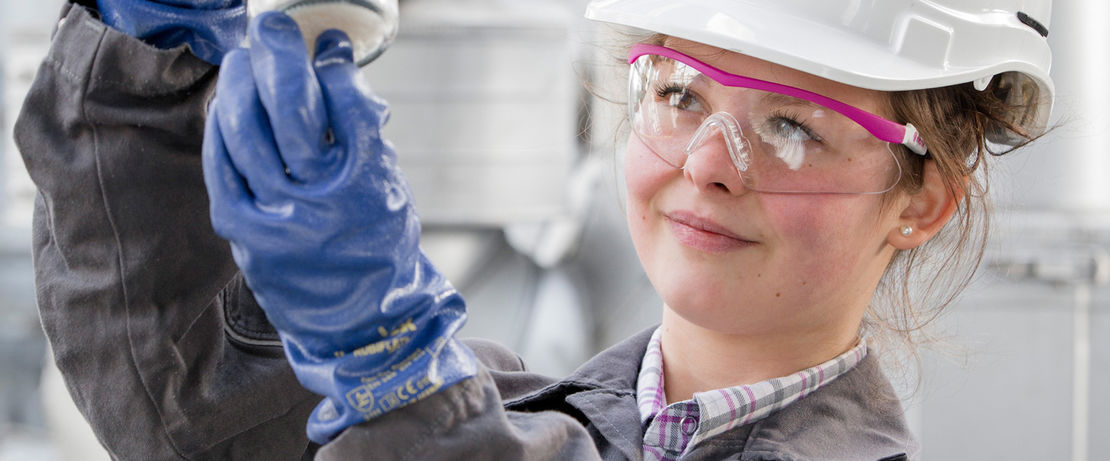
VESTENAMER® in rubber compounds
The homogeneity of rubber compounds—the distribution of fillers and additives—is improved by adding small amounts of VESTENAMER®.
Improving the dispersion of additives, optimizing shaping processes
The homogeneity of rubber compounds—the distribution of fillers and additives—is improved by adding small amounts of VESTENAMER®. The use of VESTENAMER® results in faster filler incorporation and dispersion during mixing and in addition to lower mixing temperatures. This is of particular interest where scorch time is an issue, since then more time is available to reach the prescribed dump temperature of the mix.
In many cases, the introduction of VESTENAMER® is accompanied by a drop in energy consumption during mixing. Another example of improved flow properties is for instance the reduction of injection time during transfer and injection molding. Actually all shaping processes like calendaring, press molding and extrusion become easier. Extrudates and mill sheets show better surface finish, while the extrusion swell is greatly decreased.
As mentioned above VESTENAMER® is incorporated into the rubber matrix after vulcanization. Therefore, in contrast to other additives the amount of one of the base rubbers can be reduced by the same amount of VESTENAMER® used.
IMPROVING COMPATIBILITY
VESTENAMER® can even bind polymers that are otherwise incompatible. Some of these include
- EPDM and NBR
- Emulsion and solution rubber
- Polar and nonpolar rubbers
- Polyolefin compounds
Influence of VESTENAMER® on the vulcanization and the vulcanisate
VESTENAMER® can be cured with all conventional curing systems. Its cure rate with sulfur is comparable to that of a slow curing SBR. In blends with faster curing rubbers like NR, IR or BR the accelerator level can be slightly increased. Blends of EPDM with VESTENAMER® are normally cured with peroxides since sulfur curing can deteriorate the properties of the vulcanisate.
VESTENAMER® has an influence on the physical properties of the cured compounds . In general, hardness and modulus are increased, whereas tensile strength, strain at break and tear resistance are slightly decreased. For the most part, the dynamic properties are also improved, as demonstrated by the reduced heat buildup in fatigue tests.
Reducing polymer degradation when processing natural rubbers
It is well known that the degree of polymer degradation or "mastication" has a decisive impact on the processability of natural rubber (NR). In the presence of VESTENAMER®, this degradation is reduced and even prevented at higher concentrations. At the same time, the viscosity level of the NR/VESTENAMER® blend is reduced significantly. This behavior opens an opportunity to selectively tune the viscosity of the natural rubber compound through plasticization with VESTENAMER® and, at the same time, reduce undesired reversion.
- In multi-stage treatment processes, such as the reprocessing of reject batches, the drop in viscosity compared to the pure natural rubber compound decreases as the quantity of TOR is increased.
- Rheometer data show that the vulcanization speed of the blends with increased TOR content is somewhat slower. This effect is reduced, however, when the vulcanization temperature is increased. Alternatively and if desired the decrease in vulcanization speed can be compensated by increasing the level of accelerator.
- Tests prove that VESTENAMER® significantly improves the reversion stability of natural rubber, especially at higher vulcanization temperatures.
- In consequence of the higher molecular weight retained, due to less degradation (during processing) and reduced reversion, when using VESTENAMER®, the static and dynamic properties of the vulcanizates can be improved significantly. For example an increase in modulus, improved compression set, reduced heat development with dynamic loading etc. are observed. These effects are more pronounced, the higher the shear load during the entire treatment process, and the higher the vulcanization temperature and/or the longer the vulcanization time was.
- VESTENAMER® significantly improves the abrasion resistance of natural rubber compounds.

